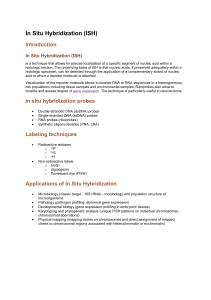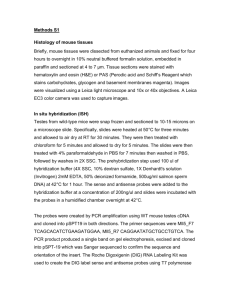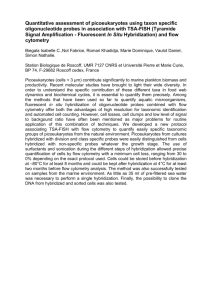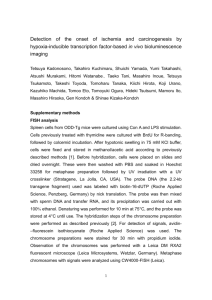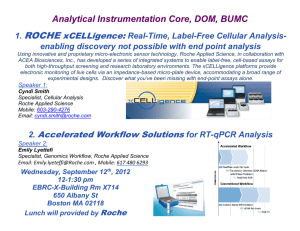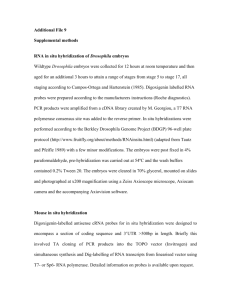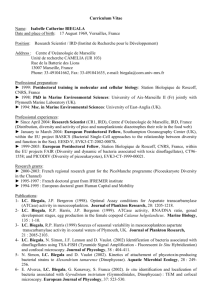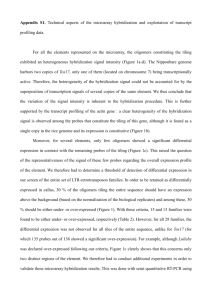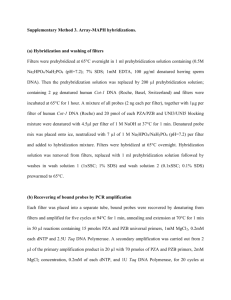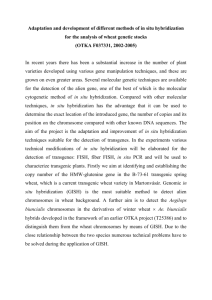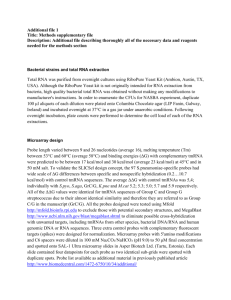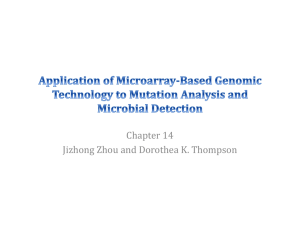DIG in situ hybridization probes
advertisement
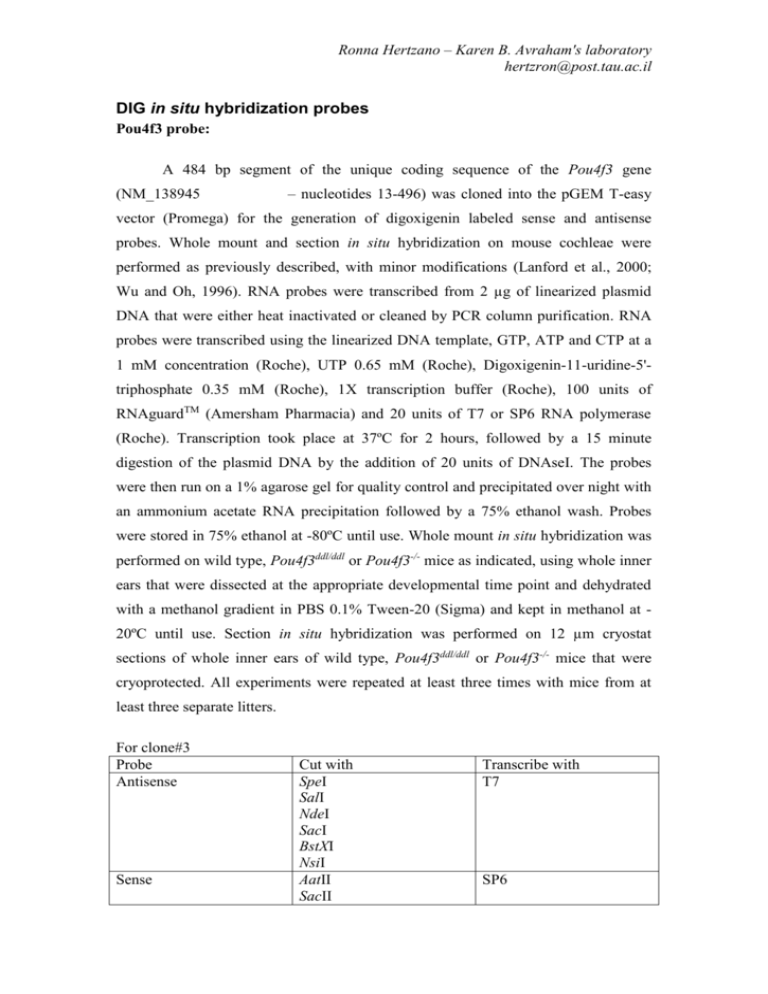
Ronna Hertzano – Karen B. Avraham's laboratory hertzron@post.tau.ac.il DIG in situ hybridization probes Pou4f3 probe: A 484 bp segment of the unique coding sequence of the Pou4f3 gene (NM_138945 – nucleotides 13-496) was cloned into the pGEM T-easy vector (Promega) for the generation of digoxigenin labeled sense and antisense probes. Whole mount and section in situ hybridization on mouse cochleae were performed as previously described, with minor modifications (Lanford et al., 2000; Wu and Oh, 1996). RNA probes were transcribed from 2 µg of linearized plasmid DNA that were either heat inactivated or cleaned by PCR column purification. RNA probes were transcribed using the linearized DNA template, GTP, ATP and CTP at a 1 mM concentration (Roche), UTP 0.65 mM (Roche), Digoxigenin-11-uridine-5'triphosphate 0.35 mM (Roche), 1X transcription buffer (Roche), 100 units of RNAguardTM (Amersham Pharmacia) and 20 units of T7 or SP6 RNA polymerase (Roche). Transcription took place at 37ºC for 2 hours, followed by a 15 minute digestion of the plasmid DNA by the addition of 20 units of DNAseI. The probes were then run on a 1% agarose gel for quality control and precipitated over night with an ammonium acetate RNA precipitation followed by a 75% ethanol wash. Probes were stored in 75% ethanol at -80ºC until use. Whole mount in situ hybridization was performed on wild type, Pou4f3ddl/ddl or Pou4f3-/- mice as indicated, using whole inner ears that were dissected at the appropriate developmental time point and dehydrated with a methanol gradient in PBS 0.1% Tween-20 (Sigma) and kept in methanol at 20ºC until use. Section in situ hybridization was performed on 12 µm cryostat sections of whole inner ears of wild type, Pou4f3ddl/ddl or Pou4f3-/- mice that were cryoprotected. All experiments were repeated at least three times with mice from at least three separate litters. For clone#3 Probe Antisense Sense Cut with SpeI SalI NdeI SacI BstXI NsiI AatII SacII Transcribe with T7 SP6 Ronna Hertzano – Karen B. Avraham's laboratory hertzron@post.tau.ac.il
